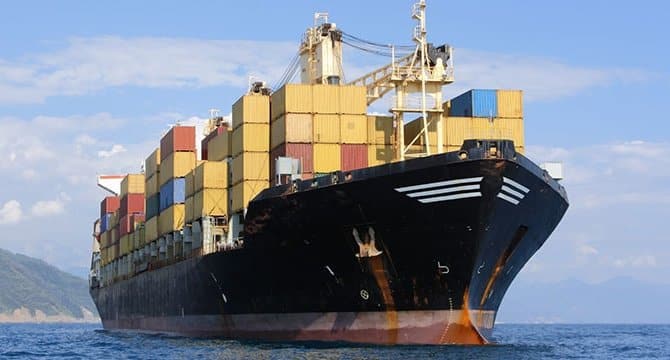Your software is not the answer, invest in your staff
Many years ago, early in my career in customs and trade compliance software, I recall one of my very first implementations with a relatively small client in Mexico. I was implementing our Mexico trade compliance software, which managed all the importation and exportation documentation and inventory tracking for customs purposes. It was a routine implementation, nothing out of the ordinary. What should have been less than a 30-day implementation turned out to be a nightmare of a 6-month and beyond struggle to get the customer to properly file with Mexican Customs using the software.
I knew the software worked perfectly, after all I was on the development team and us programmers never make mistakes, I mean, the program compiled without errors, so it must be flawless. But seriously, how can the exact same version of the software work perfectly fine at many customer sites and not at another. In fact, more baffling was the fact that we had the software implemented in much larger operations than this small company I was assigned to implement.
It did not take long before I figured out that many times I was running into the fact that clients completely relied on the thought that the computer will do all the work, regardless of what input you feed the software. We have all heard the term, ‘garbage-in, garbage-out’, well that cannot be truer with customs compliance software.
Imagine the following scenario:
A manufacturer of a gadget in Mexico imports assemblies from their sister plant in China. These parts are imported as kits, ready to manufacture the gadget and claim NAFTA to sell at a competitive price in North America. When they import the kits to Mexico, they classify as individual parts, rather than an assembly for said gadget. The final product qualifies as NAFTA because the parts tariff shift due to their classification. In an audit, it is very likely that customs will argue that the parts imported, as kits, are actually gadget assemblies and not individually classified, thus excluding those parts from a tariff shift.
I can definitely say that there is no way any software would be able to detect that the parts were classified incorrectly. It would, of course, under this scenario provide the justification and analysis for the gadget under NAFTA and have the backup documentation to prove it, albeit incorrect in real life due to bad classification.
After 25 years in the industry and having been through countless implementations with clients, both large and small, it did not take long to figure out very early in the implementation stage, which clients were going to be successful. It was almost certain that a trade compliance team that did not know much beyond clerical import/export documentation was going to have a very hard time implementing the software. This is where investing in staff comes in.
We have all heard the old story, or joke, about the two managers talking about training their staff. One of them says, “…what if we train them, and they leave?” and the second replies with, “…what if we don’t train them, and they stay?”
It is difficult to relay to a team how important data and procedures related to their product, logistics, and compliance play an important role in making sure the software will produce the correct results and print the correct documentation for them. This was true with the software that we developed because our product was not a form filler, but more of a complete solution that provided customs documentation and compliance based on the data and information provided by the user and integrated to their business solutions where other elements, like finance, supply chain, and production is managed.
Logically, the common thought is that a company is serious about doing things right if they invest in software. It is not a casual expense to purchase and implement software. Besides the cost of the software, there are lots of other factors that come into play, including the resources that will be allocated to implementing and maintaining the software. Many times I have seen individuals from just about every department in the company get involved in the process and that takes time and money.
So with all this investment and allocation of resources, why not make sure that everything is done right? One often-overlooked fact is that employees need to be constantly trained and updated on new rules and regulations. Although any good software will be updated to make sure the right form is printed or that the latest duty rate is calculating correctly, that still does not take away the fact that may decisions are human and not machine related. For example, what if there was a change in the production process that changes the sourcing or technology or process for the products that you produce. This could cause changes in valuation and/or classification, making it possible that the product that once qualified for any given free trade agreement may no longer qualify. Perhaps the product did not require a special trade license or any other government requirement but now does because of the change. If you invest in staff training, you can get ahead of these types of scenarios.
Recently I had the opportunity to work with a client that I had sold and implemented software many years ago. They were one of my best clients and quite often we used them as a beta test site or to bounce new features ideas off them. My role with this client recently was not software related but training on specific customs compliance. They not only trained local staff, but also brought in people from other locations for training. Furthermore, they did not only train the day-to-day staff, but also included their comptroller, engineers, and production staff. It is no wonder they were a good user because they take the time to train their staff and know the industry and rules and regulations pertaining to trade and customs, rather than rely on the software.
I asked one of the managers what was their motivation for training. In other words, why they go through the trouble of training their staff when others tend to know they need training but never get around to it. He said it was a great way to keep employees around and to recruit new employees. He felt that in order to get the best talent, and keep them, they need to keep investing in their employees and show that they, as a company, are helping them grow. He laughed and said that the consequence is having a great compliance department and not having to deal with penalties or issues in the future. He went on to tell me that this is true in all other departments, not just in customs, so they have made it part of their culture to make sure education is part of an ongoing process at their company.
Which brings me to the conclusion of my story for that small company in Mexico I implemented early on in my career. Turns out they got a great contract and grew their business exponentially. The software was turning out all the documentation they needed for customs purposes. Not very long after that, the company shut down. Aside from other issues, they were audited by Mexican customs and found that they were never classifying and declaring their parts correctly, although the software printed the correct customs documentation, it did not represent the correct real-life information that should have been determined by the staff based on their knowledge of the products and regulations. Learn from these examples, and invest in staff training to ensure a smooth implementation.







